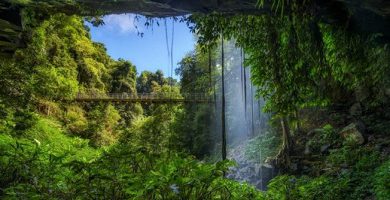What is a chronicle? Definition, types & their Examples
We explain what the Journalistic Chronicle is and to what gender it belongs. Journalistic, literary, and historical chronicle. Example of a brief chronicle.
What is a chronicle?
When it comes to chronicle, it usually refers to a double narrative genre, partly literary and partly journalistic, since it does not possess the freedoms of imagination of literary fiction, but it uses its formal resources to deal with real and true real events and characters. and verifiable. Gabriel García Márquez, a famous Colombian journalist and writer, defined the chronicle as “a story that is true.”
The origins of the chronic word date back to the Greek kroniká, a word from Kronos (time), since it refers to an ordered narration according to its timeline. That is why the first known chronicles were, precisely, relations of events ordered according to the historical moment, similar to intimate newspapers or reports.
The chronicle became popular in the journalistic field from the so-called New American Journalism ( New Journalism ), which consisted of a generation of avant-garde reporters and writers, given the use of this genre to refresh the face of journalism.
With this, they were able to reverse the traditional informative pyramid of the Harold Lasswell paradigm, which established the obligation of all news to contain all relevant information, and then additional content. The chronicle, on the other hand, proposes the reverse path, as literary stories do.
There are currently academic debates about whether or not the chronicle is a literary or journalistic chronicle genre. And from the weakening of the boundaries between genres of discourse (journalism, literature, pedagogy, art, etc.) that characterizes the contemporary era, this debate becomes even more difficult.
Types of Chronicle
The classification of the chronicle genre is always debatable. But they are usually classified according to their focus or theme, and the degree of fidelity to the historical truth they demonstrate.
1. Journalistic chronicle
- Sports chronicle
- Black chronicle or event
- Political chronicle
- Chronicle of society
- Travel chronicle
2. Literary Chronicle
3. Historical chronicle
According to their journalistic approach, journalistic chronicles can also be classified as informative or white (greater degree of objectivity, more similar to the news) and interpretive or opinionative (they investigate, interpret, and explain the reason for the narration).
Chronicle example
The following is a fragment of the chronicle of the journalist Marta Ruiz, for the newspaper Semana published on 02/23/2013.
A brief chronicle of a trip to Havana (fragment)
Marta Ruiz
Two weeks ago I took a plane and went to Havana to see firsthand what is happening there. I got up early for the Hotel El Palco, in whose convention center the government-guerrilla meetings take place. Contrary to popular belief, there is little Colombian press.
That day, the day before the end of a round that had begun with the spirits warmed by the kidnapping of two policemen, there were but the correspondents of RCN and Caracol and a handful of Cuban journalists.
That morning Iván Márquez stood in front of the microphone and read the 10 minimum proposals for the political recognition of the peasants. “We always get 10,” he said at coffee time, referring to the daily ritual of presenting ideas about what his government counterpart, Humberto de la Calle, called “the divine and the human.” Marquez took advantage of the break to finish a thick cigar that had already half-smoked.
At that time the photo not known in which the guerrilla leader poses for the camera on a Harley Davidson motorcycle, and he confirmed to us, together with tobacco, that Márquez’s revolution does not contradict certain pleasures.
While the FARC does their morning ritual, the government delegation passes by silently, without even looking at what they consider a media show. But journalists break their heads trying to find news that really arouses interest in Colombia.
Although the day the journalist caught us there, the FARC celebrated with a mojito, and they shouted very livelily: Long live the social communicators !, the guerrillas think that the low profile of the conversations are It is due to a media strategy.
One of the delegates of the insurgency is frankly nostalgic: “We liked the Caguán scheme more because we were closer to journalists. Now they change them for each round. ”
That afternoon I had an informal talk with Sergio Jaramillo, the high commissioner of Peace of the Santos government. In those days, as he told me, there were very important advances in the Bureau on the issue of land, but, respecting the confidentiality rule, he did not mention the content.
He assured me that if it continues at that rate, it is possible to reach a framework agreement in a reasonable time. When I asked him about the bad weather in the country regarding the dialogues, he did not hide his bitterness: “The urban country does not seem to care what happens in the countryside,” he told me.
From both delegations, I highlight the mutual respect with which they are treated and the incredible discipline they have for not breaking the confidentiality of the Board, a sign that both want to take care of the process. What they do comment is that the methodologies for approaching the issues are very different.
It is something like historical materialism against PowerPoint. While the FARC makes long historical exhibits on the land problem, which overwhelm the members of the Government, they, in turn, take slides with very pragmatic figures to explain to others how the rural market and the land registry work. After all, that’s what dialogue is about.
You May Also Like:





